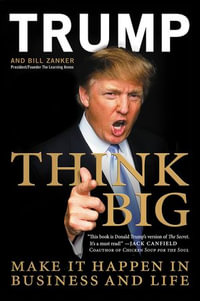The book is organised in three parts: * Part 1 - chapters 1 and 2 - focus on explaining the concept of governance, key terms and definitions as well as the economic, political and social factors that impact on how the governance function is enacted within sport organisations; * Part 2 - chapters 3 to 11 - focus on the "mechanics" of governance - the elements of structure, process and performance that ensure the governance function is carried out within sport organisations; and * Part 3 - chapters 12 to 14 - focus on a number of contextual issues in sport governance, including dual leadership, ethics, governance change and future governance challenges. Chapter 1: The Governance Game: Why is sport governance unique? This chapter will introduce the concept of governance and why sports organisations need to ensure their respective governance systems reflect good practice in order to achieve organisational outcomes. A particular focus will be the need to ensure that people involved in governance (staff and volunteers) are adequately prepared to fulfil their roles and responsibilities. The chapter will outline the key principles for good governance, review theories such as agency theory and stewardship, define the terms to be used in the book, and set the scene for the following chapters. Chapter 2: The Playing Field: Influences on sport governance This chapter will review the key features of existing corporate and nonprofit governance models (e.g. Traditional model (Houle, 1997), the Carver policy governance model (Carver, 1997, and corporate governance principles) and how they relate to sport organisations. The chapter will build an argument that the unique features of sport organisations at community, state/provincial, national, international and professional levels require different governance systems and present different governance challenges. The influence of the state in the sport industry will be examined, specifically the development of a range of national and state policies that affect how sport is governed, corporations law and fudiciary responsibilities. The influence of globalisation, technology developments and the increasing commercialisation of sport on governance systems in sport will also be examined. Chapter 3: Team Structures: Governance structures in sport There are a number of structural governance issues that sport organisations need to consider. These include the need to balance member and/or stakeholder representation versus skill based appointments to the board, deciding on an appropriate size for the board, the relationship between boards and membership councils, and the role of standing and other committees. This chapter will cover each of these issues and provide a number of detailed examples to illustrate good practice. The unique nature of these organisations will also be examined with a focus on ownership issues, influence of power over sport governing bodies, the mechanics of governing global organisations, relationships between national governing bodies and commercial arrangements for national leagues, and ensuring compliance from league members. It will also examine the increasing influence of broadcast entities and sponsors on the governance of professional sport. Chapter 4: Team Positions: Governance roles and responsibilities This chapter will detail the roles and responsibilities of the board, board chair, board members, and executive (paid staff) and explain the notions of responsibility, accountability and delegation. There is much confusion within the sports industry of the roles of these respective positions and this chapter intends to clarify these roles through the use of detailed examples in a number of sport organisations. Chapter 5: Team Selection: Selection, election, or appointment? This chapter will cover the processes of selection, orientation, training, development and education of board members, board chairpersons and the CEO. The issues and challenges of working within democratic processes to ensure stakeholder representation while striving to have skilled and experienced people in governance roles will be a focus of this chapter. Chapter 6: Teamwork: Communication, processes and culture at the board table This chapter will examine strategies to ensure meetings have a strategic focus, enhancing communication with organisational members and other corporate governance practices that should be applied within sport organisations to ensure the board and staff, work as a team. This chapter will also cover a topic that rarely surfaces in other texts on governance - the dynamics of board culture. Utilising principles from organisational theory, the issues of how board culture manifests, what impact it has on board performance, and how to manage and change board culture will be examined in depth. Chapter 7: Offensive game plans: Enhancing board performance The strategic role of the board will be the focus of this chapter. It will examine how a board should undertake strategy development in conjunction with paid staff, how the board can seek to enhance organisational performance and the various policy requirements associated with the development of strategy in sports organisations. Chapter 8: Defensive game plans: Ensuring compliance and monitoring organisational The conformance role of the board will be examined in this chapter, specifically how a board can institute compliance monitoring procedures, identify and manage risks, and how the board can ensure compliance by the organisation with a variety of stakeholder requirements. Chapter 9: Team Performance: evaluating board, CEO and board member performance This chapter will explore the issues involved with evaluating overall board performance, and the performance of board chairs, individual board members and the paid executive. It will identify various techniques for individual and group evaluations and the benefits of implementing a board evaluation system. The relationship between board and organisational performance will also be discussed. Chapter 10: Co-captains: Dual leadership challenges in sport organisations This chapter will discuss the issue of board leadership, specifically finding the balance between paid staff and volunteer board member influence in the decision-making processes. Through an examination of a number of examples and the findings of an increasing body of research, a set of guiding principles will be provided for how leadership can be facilitated within the board setting. Chapter 11: Team Rules: Ethics and principles of good governance This chapter will explore the ethical dimensions of governance including an introduction to ethics, ethical decision making processes and moderators influencing ethical decision making. A number of cases of governance "failure" or crises such as have occurred in Australian soccer, athletics, and other sports around the world will be critically reviewed. Chapter 12: Team Changes: Surviving and managing governance change Managing any changes in governance elements consistently presents dilemmas for those people involved in governing sport organisations. This chapter will discuss the issues involved in changing roles for boards and board members, the value of incorporation, constitutions, initiating performance evaluation processes, changing membership representation structures, and surviving organisational amalgamations and mergers. Chapter 13: International sport governance: global issues International governing bodies for sport and sport events deal with complex inter-organisational linkages, diverse stakeholders, pressures to maintain equitable representation for their members, and are increasingly working with media and commercial organisations to deliver elite sport. This chapter will review the way international sport organisations are governed, and the many challenges they face in working with their constituent groups. Chapter 14: Future Seasons: Sport governance challenges of the 21st century The final chapter of the book will outline a number of future sport governance challenges. These will include the development of multi sport clubs, the challenge of diminishing numbers of volunteers in the sport sector, the need to diversify services for sport organisation members, ensuring continued transparency in governance processes in larger organisations, and government demands for improved governance performance.

























